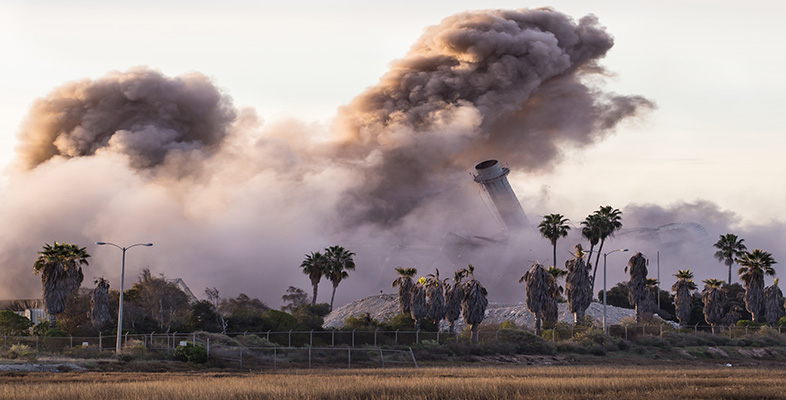5.3.4 Response to national consultation
‘The Future of Aviation’ consultation ended on 12 December 2000 and more than 550 responses were received, with 120 responses from individuals, 106 responses from local authorities, 72 responses from environmental and residential organisations, and 119 responses from airports, airlines and related aviation organisations.
The overwhelming response to the questions about the environmental impacts of aviation was that the ‘polluter should pay’ and that aviation should meet its full ‘external environmental costs’ without benefiting from government subsidies. The taxation of aviation fuel was a major issue raised, although it was felt that this should be agreed at international level by the International Civil Aviation Organisation (ICAO) (many respondents thought noise and emission standards should also be set by ICAO). Several respondents also said that value added tax (VAT) should be charged on air travel and on the purchase of aircraft. They pointed out that the British government was indirectly subsidising aviation by not taxing aviation fuel. In the mid 20th century, when the international airline industry was beginning to develop, tax had been construed as a major source of conflict as different national governments could charge different levels of tax, especially on fuel, potentially placing national airlines at a disadvantage. So in 1944, during the Chicago Civil Aviation Conference, an international agreement was made to not charge any tax on aviation-related businesses, including aviation fuel and the cost of aircraft. In 1992, the USA introduced the Open Skies Agreement which further liberalised aviation and made it virtually impossible for any national government to unilaterally introduce taxation on aviation.
Some specific responses that challenged both the assumptions and processes outlined in the national consultation document are included below.
- Airport Watch, a coalition of major environmental NGOs, including Friends of the Earth, Transport 2000 and the Woodland Trust, saw things very differently. The NGOs suggested that a tax on aviation fuel would effectively bring to an end the rising demand for air travel.
- Friends of the Earth and other NGOs were able to re-run SPASM with the same fuel VAT charges as those on cars (17.5%). The additional increases in travel costs effectively resulted in a significantly reduced number of passengers, rising to 315 million by 2030, and not the 500 million as predicted in the original simulation. This meant that existing runways could accommodate the increase if all capacity was used throughout the United Kingdom – no new runways would have to be built.
- Many groups also began to question the other assumptions made in the original SPASM simulation. For example, at the time of writing this case study in 2005, the price of oil seems to be ‘stabilising’ at around $65 per barrel, more than double the price originally used, and this is only four years after the original estimate.
Another major criticism was aimed at the decision-making process. At no stage were limiting factors such as CO2 emissions considered. UK emissions of CO2 in 2001 were 572 million tonnes, with aviation contributing 30 million tonnes (DTI, 2003). The Department for Trade and Industry 2003 Energy White Paper set a target of reducing total UK carbon emissions by 60% by 2050. Taking this target into account, it is estimated that the UK’s carbon emissions will be reduced to 495 million tonnes by 2020. The emissions resulting from the aviation growth forecasts by the original SPASM simulation would result in a projected 77 million tonnes of CO2 released into the atmosphere by 2030, almost 16% of the total allowable emissions. The implications are that the UK population would have to drastically cut CO2 emissions by, for example, reducing car journeys, household heating, and developing renewable and nuclear energy sources, just in order to accommodate the significant growth in emissions from air travel. So not only is aviation subsidised by not paying tax on fuel, but the non-travelling population would have to make additional sacrifices to accommodate the expansion, if the ‘Energy White Paper’ supposed targets are to be met.
Activity 21 Comparing audio interviews
The following audio clip, from a programme called Leading up to the white paper, contains two interviews – one with Mike Fawcett and Chris Cain of the Department for Transport and the second with Peter Ainsworth MP. Mike Fawcett was head of the Airports Policy Division from September 1996 until December 2003 and had overall responsibility for the production of the ‘Aviation White Paper’. Chris Cain worked in the Airports Policy Division from 1999 and was responsible for devising, commissioning and managing the programme of preparatory studies, preparing and undertaking some of the public consultations, and drafting sections of the white paper itself. Peter Ainsworth was chair of the Environmental Audit Committee (i.e. a UK parliamentary committee) at the time the white paper was published. The committee’s remit was ‘to consider to what extent the policies and programmes of government departments and non-departmental public bodies contribute to environmental protection and sustainable development’.
The two interviews present distinct views on the context leading up to the Aviation White Paper and on the process itself. Listen to these interviews and contrast them to your response to Activity 19. Compare your intuitive assessment as a newcomer to the issues with that of people who have been intimately associated with the process.
Transcript: Leading up to the white paper (28 minutes 31 seconds)
Leading up to the White Paper
No response is provided for this activity as I am unable to take a newcomer’s perspective here.
